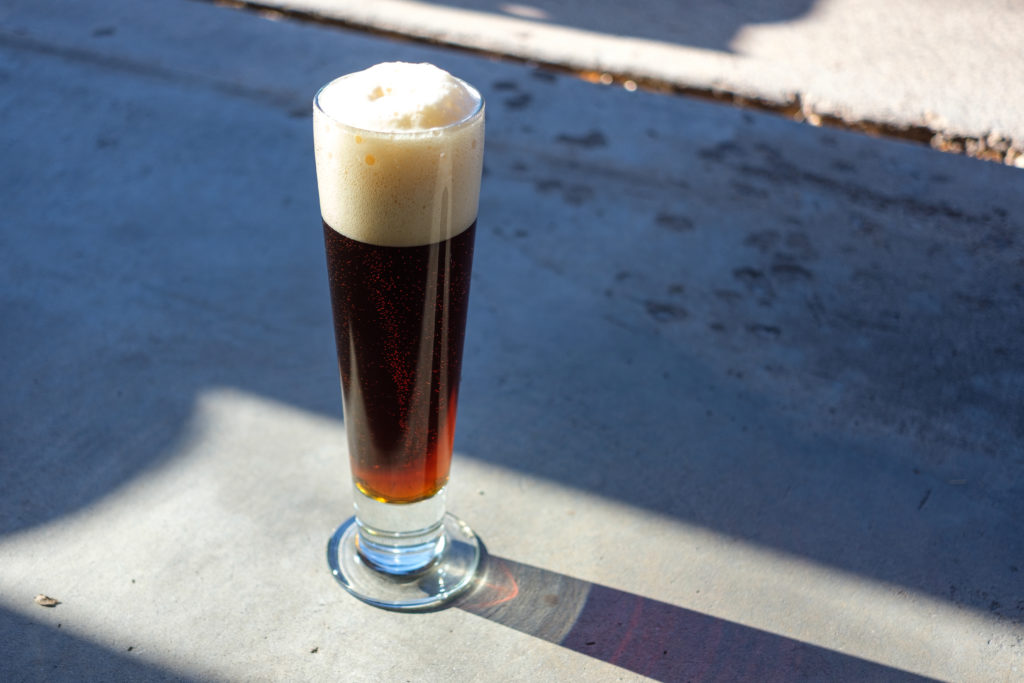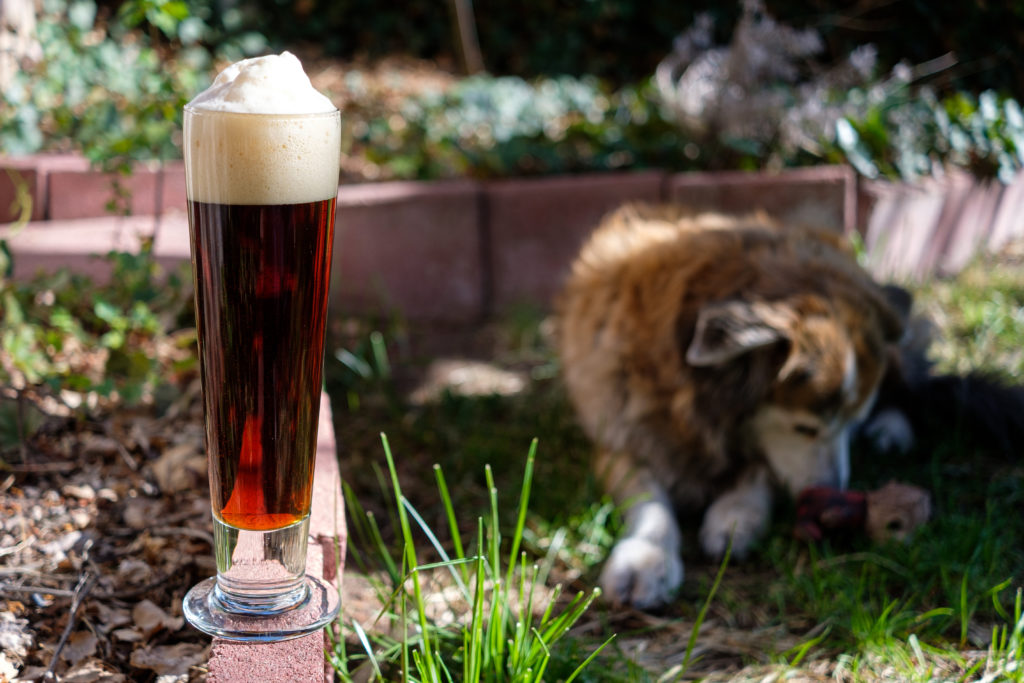Czech Dark Lager is Suddenly Everywhere

Last week, I was at the National Homebrew Con. It was my first time attending, and while I had a great time overall, my body is still recovering. Too much beer, lots of walking, not enough food, not enough sleep.
I enjoyed the beer I had at the convention itself, and Club Night was a ton of fun (more on that later), but one trend I noticed while visiting many of San Diego’s spectacular breweries was that a majority of them had a Czech dark lager on tap. I’m talking some big names, like Harland Brewing Co., North Park Beer Co., and The Lost Abbey. This is a trend I can really get behind.
Somewhere between the jet-black, dry schwarzbier and the brown, bready dunkel, Czech dark (aka tmavé pivo) is kind of the best of both worlds. It’s got malt character, but it doesn’t beat you over the head with it. It’s got hops, but they’re in sync with the malt. And it’s really, really drinkable.
A few months back, I made my first Czech dark on the yeast cake from my Pilsner Urquell clone attempt, and it came out better than I could have hoped. Here’s the recipe!
What’s in it?
The Vitals
- Name: Before Dawn
- Category: BJCP Cat. 3D (Czech Dark Lager)
- Batch size: 4 gallons
- Mash: Full-volume, no-sparge, step-mashed; 20 min @ 147F, 60 min @ 162F, 10 min @ 172F
- Boil: 60 minutes
- Fermentation: Pitch @ 54F and raise to 60F over 10 days
- OG: 1.052
- FG: 1.013
- ABV: 5.1%
- IBU: 34
The Grain
- 4 lbs Best Pilsen (53%)
- 2 lbs 12 oz Weyermann Munich I (36%)
- 10 oz Weyermann Caramunich III (8%)
- 3 oz Weyermann Carafa Special III (3%, added at mashout)
The Hops
- 24g Hallertau Magnum [10.8% AA] @ 50 minutes (26 IBU)
- 35g Saaz [4.4% AA] @ 15 minutes (8 IBU)
The Rest
- Yeast: Cake of Imperial Urkel from Foam Hands
- Water: 5.6 gallons RO + 0.5g baking soda, 2.5g CaCl2, 1g CaSO4
- Presumed Water Profile: Ca2+ 43 | Na+ 7 | Cl– 57 | SO42- 27 | HCO3– 17 | Mash pH 5.5
» BeerXML Download «
How’d it go?
After experimenting with sparging on my Brewzilla 4 and finding it to be more trouble than it was worth, I decided to full-volume mash and no-sparge this batch. In the end, it was a lot easier.
After reading a bunch of articles about Czech dark lager—including this ultra-insightful profile from Craft Beer & Brewing magazine, which quotes multiple Czech brewers—I designed a recipe that I hoped would be more or less middle of the road for the style. Not too dark, not too light. Not too bitter, but not too sweet.
Even though it was debittered, I decided to add the Carafa Special III at mashout in order to further limit the roast character the beer would get from it. The idea was to get all of the color and not much flavor contribution.
I’ve somehow misplaced my notes from the brew day, but Brewfather tells me I came in a bit under my target OG of 1.056, landing at 1.052. After pressure-fermenting at 25 PSI for about two weeks, I arrived at a steady FG of 1.013, placing this beer at 5.1% ABV. I transferred it to a purged serving keg and let it condition over the course of a couple months, tasting as I went.
How’s it taste?
For a long time, I’ve struggled with mid-colored beers that came out with a tangy, almost acidic edge. Otherwise excellent brown ales, amber lagers, and red ales were consistently marred by this one flaw. But with this beer, I seem to have turned that around. I’m not sure what the difference was here, but it may have had something to do with mashing at a higher pH than I used to. Or maybe it was holding the Carafa till mashout.
Either way, this is easily the smoothest, easiest-drinking amber beer I’ve made.

Appearance: My understanding is that in the Czech Republic, dark lager ranges from dark amber to jet black. This one came out right in the middle of that range, with a red-tinged brown hue. Like the Czech pilsner I made, this one has a beautiful, mousse-like head (just a bit off-white) thanks to a generous alpha amylase rest and pressure fermentation. It was a bit challenging to pour thanks to the foam, but slow pours yielded beautiful results. I didn’t use any finings on this beer, and after a month or so it was pouring crystal clear. I love it.
Aroma: Unsurprisingly, malt dominates—more sweet and lightly bready and caramelly than roasted, which was the goal. The Saaz hops are there, for sure, but they play a supporting role for the malt. Unlike the pils, there’s no detectable diacetyl here. I’m assuming that’s because of the slightly higher fermentation temp, but it may also be the fact that there were simply a lot more yeast in the mix.
Flavor: All of the malt aroma is present on the palate as well—all brown bread and caramel—along with a bracing but not overdone bitterness. The IBUs for this recipe calculated out at 34, but to me it’s a noticeably sharper bitterness than what I got from my Czech pils, which had the same theoretical IBUs. The main difference here is that I used Magnum for bittering, rather than going all-Saaz, so there may be a hop oil–based reason for this beer’s hop punch. While diacetyl isn’t present in this beer, it shares a silky softness with the pilsner that I’m going to attribute to the Urquell yeast.
Mouthfeel: Despite the malt-heavy aroma and flavor, this is a very sessionable beer—not too heavy or sweet—with a drying finish that makes you want another sip. The carbonation is slightly soft, perhaps a product of the pressure fermentation.
What would I change next time?
Honestly? Not much. This one’s a banger.

Leave a Reply